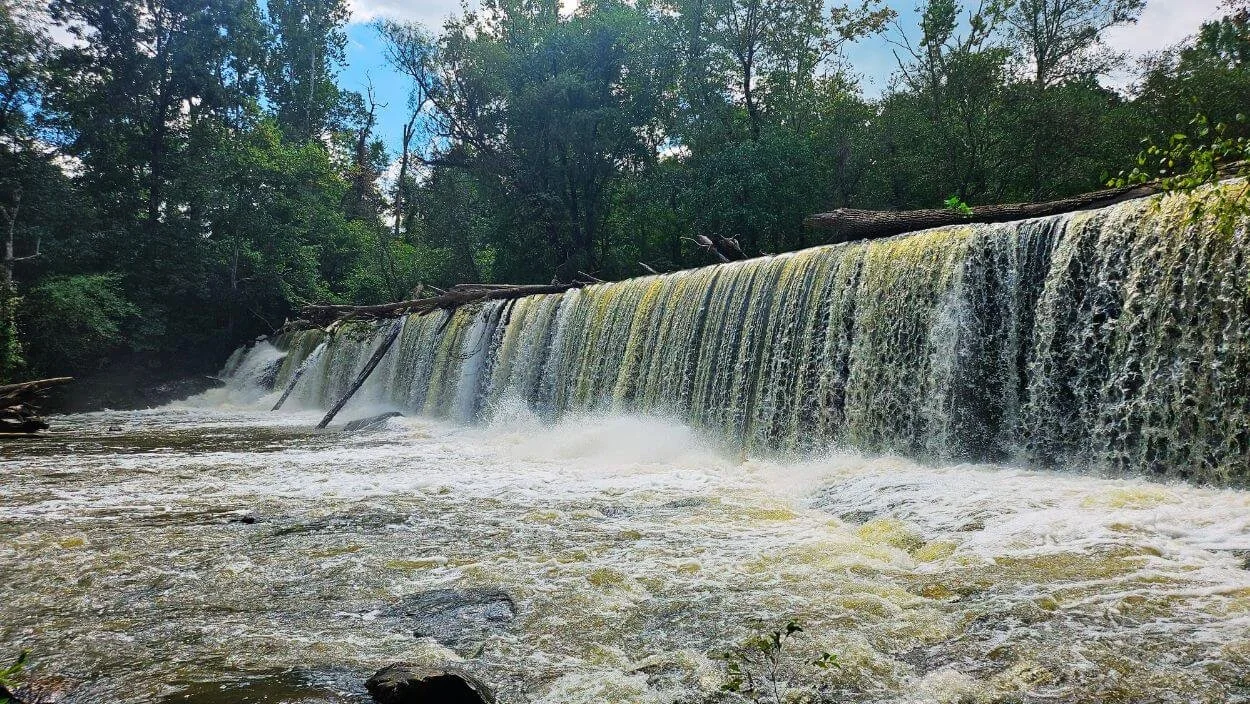About Low Head Dams
A low head dam, also known as a run-of-river or diversion dam, is a structure built across a stream channel from bank to bank. The dam is built such that water can flow over the top of the structure during normal stream flows. Often, low head dams include a way to divert water from the main stream channel into a separate canal where the energy of the water is harnessed to do work, such as run a mill, generate electricity, or provide water for irrigation.
Because low head dams act as barriers to water, sediment, and many aquatic organisms that naturally move within the stream channel, they have a profound effect on the streams where they are located. By blocking the flow of water, they create impoundments upstream of the dam and over time, these impoundments can take on features of a lake instead of a river. As the water flow slows down due to the dam, sediments that are typically carried by the flowing stream settle out of the slower moving water and collect on the streambed upstream of the dam.
Low head dams also block the movement of aquatic organisms such as fish and mussels and restrict the ability for these species to access upstream habitat. Taken together, these impacts can have a strong effect on the environment both locally, and throughout the watershed.
Removing dams, such as the Ossipee Dam, can offer some great benefits to the environment. Since the Reedy Fork supplies water to municipal reservoirs, removing this dam could even contribute to improved water quality within the larger watershed. Some of the key advantages of dam removal include:
Improved Water Flow: Removing low-head dams allows streams to flow more naturally:
Downstream Flow: Water can move through the stream more smoothly, helping to clear out excess nutrients and bacteria.
Side-to-Side Flow: Water can spread into nearby floodplains, allowing the exchange of water, soil, and nutrients that are important for healthy ecosystems.
Up-and-Down Flow: Water can mix better with groundwater, leading to more natural groundwater recharge and filtration, which in turn can help improve water quality
Seasonal Flow: Water flow changes with the seasons. Removing a dam can help restore this natural rhythm, and increase the overall health of the ecosystem as well as water quality improvements.
Better Oxygen Levels: As water flow improves, the amount of oxygen in the water increases, creating a healthier environment for fish, insects, and other aquatic life.
Temperature Control: Removing dams helps keep water temperatures stable, which is important for species that can be affected by sudden temperature changes.
Sediment Movement: Without dams, sediment can move naturally downstream, helping to create and maintain habitats. Ultimately this sediment provides support to areas like estuaries, deltas, and coastlines.
Restoring Aquatic Connections: Removing the Ossipee Dam will reconnect the Haw River and Reedy Fork systems, allowing fish and other animals to move freely.
Restoring Native Habitats: By restoring natural water flow and reconnecting habitats, dam removal helps revive native plant and animal communities, strengthening the health and resilience of the ecosystem.

